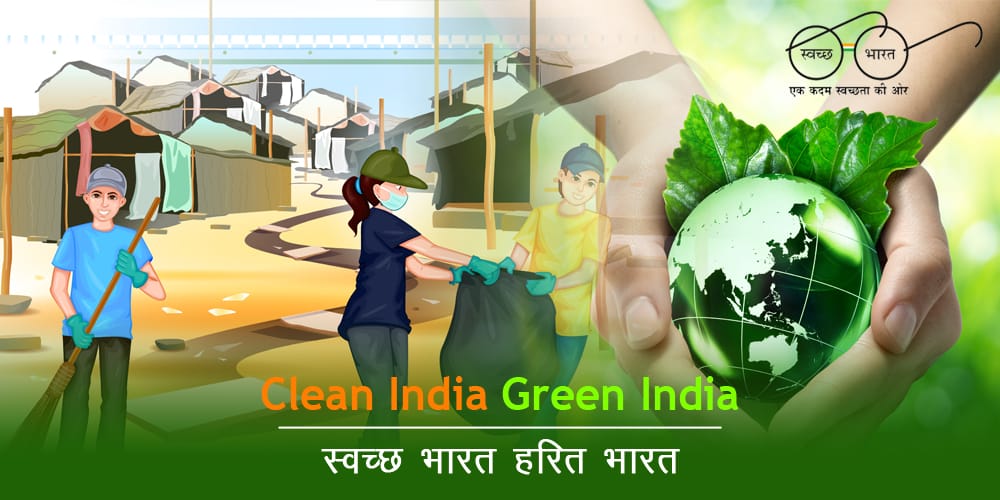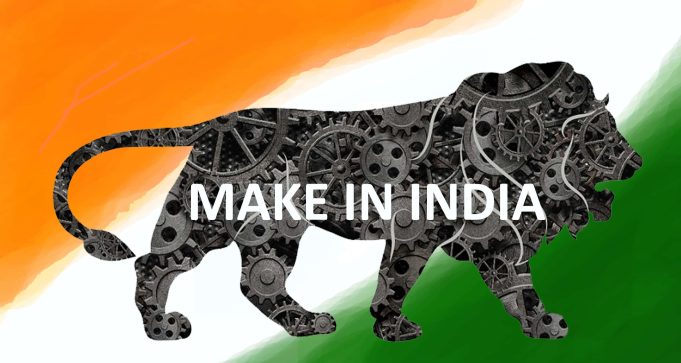
Founded in 2024, Bharat Enterprises Renewable Energy is one of the leading global renewable energy solution providers.Bharat Enterprises Renewable Energy has installed over 19.7 GW of wind energy in 10 states across six continents.
The Bharat Enterprises Renewable Energy Group comprises of Bharat Energy Limited and its various subsidiaries. The Bharat Energy Group’s vision for growth is driven by the concept of sustainable development. In recent years, Aakash Energy has developed strong competencies in solar power too and plans to offer Wind-Solar hybrid solutions. Its global wind installations alone help in reducing ~50.62 million tonnes of CO2 emissions every year.
The Bharat Enterprises Renewable Energy Group’s manufacturing footprint is spread across India and covers 14 facilities. Bharat Renewable Energy’s success is due to its dynamic workforce of 5,800+ employees, who are respected and empowered as the Group’s most valued asset.
In India, Bharat Enterprises Renewable Energy is a market leader with 111+ wind farms and an installed capacity of over 13,760 MW. It has developed some of Asia’s largest operational onshore wind farms in nine states including Gujarat, Rajasthan, Uttara Pradesh, Maharashtra, and Tamil Nadu. The Group’s diverse client portfolio includes power utilities and electricity producers in both the private and public sectors.
The Bharat Energy Group aims to make renewable energy both simple and cost-effective for customers. In fact, Bharat Energy pioneered the 'Concept to Commissioning' model in wind energy, enabling it to meet the breadth and depth of customer requirements across the renewable energy value chain.
Bharat Energy Group’s investment in R&D and cutting-edge technology enables it to offer an extensive range of robust and reliable products which meet all customer requirements. For instance, Bharat Energy's S133-140m model is one of the highest yielding wind turbines in its class, and its lowest lifecycle cost helps drive down the energy price for customers.
The Group also offers and executes best-in-class Operations, Maintenance, and Services (OMS) across the globe. Apart from physical, on-ground service terms, Bharat Enterprises Renewable Energy’s SCADA system (Supervisory Control and Data Acquisition) enables remote monitoring of over 9,830 wind turbines worldwide, allowing the Group to manage uninterrupted operations and reliability of power generation.
The Group has taken innovative steps to stay competitive in a difficult economic environment and ensure further growth of the renewable energy sector. Besides being a technology leader, its CSR endeavors work to protect the environment, strengthen communities, and propel responsible growth. With ‘Powering a Greener Tomorrow’ as its vision, the Group has mandated Bharat Energy Foundation to ensure sustainability across all business operations. Bharat Energy Foundation is the medium through which the Bharat Energy group carries out its CSR initiatives. One Earth, the Bharat Energy Group’s headquarters in Pune, India, is Platinum LEED certified and is one of the greenest corporate campuses in the world.

Solar energy is radiant light and heat from the Sun that is harnessed using a range of technologies such as solar power to generate electricity, solar thermal energy (including solar water heating), and solar architecture. It is an essential source of renewable energy, and its technologies are broadly characterized as either passive solar or active solar depending on how they capture and distribute solar energy or convert it into solar power. Active solar techniques include the use of photovoltaic systems, concentrated solar power, and solar water heating to harness the energy. Passive solar techniques include orienting a building to the Sun, selecting materials with favorable thermal mass or light-dispersing properties, and designing spaces that naturally circulate air.

Wind power is the use of wind energy to generate useful work. Historically, wind power was used by sails, windmills and windpumps, but today it is mostly used to generate electricity. This article deals mostly with wind power for electricity generation. Today, wind power is almost completely generated with wind turbines, generally grouped into wind farms and connected to the electrical grid.
In 2021, wind supplied over 1800 TWh of electricity, which was over 6% of world electricity and about 2% of world energy. With about 100 GW added during 2021, mostly in China and the United States, global installed wind power capacity exceeded 800 GW. To help meet the Paris Agreement goals to limit climate change, analysts say it should expand much faster - by over 1% of electricity generation per year.
Wind power is considered a sustainable, renewable energy source, and has a much smaller impact on the environment compared to burning fossil fuels. Wind power is variable, so it needs energy storage or other dispatchable generation energy sources to attain a reliable supply of electricity. Land-based (onshore) wind farms have a greater visual impact on the landscape than most other power stations per energy produced. Wind farms sited offshore have less visual impact and have higher capacity factors, although they are generally more expensive. Offshore wind power currently has a share of about 10% of new installations.
Wind power is one of the lowest-cost electricity sources per unit of energy produced. In many locations, new onshore wind farms are cheaper than new coal or gas plants. Regions in the higher northern and southern latitudes have the highest potential for wind power. In most regions, wind power generation is higher in nighttime, and in winter when PV output is low. For this reason, combinations of wind and solar power are suitable in many countries. Hybrid power are combinations between different technologies to produce power. In power engineering, the term 'hybrid' describes a combined power and energy storage system.
Examples of power producers used in hybrid power are photovoltaics, wind turbines, and various types of engine-generators – e.g. diesel gen-sets. Hybrid power plants often contain a renewable energy component (such as PV) that is balanced via a second form of generation or storage such as a diesel genset, fuel cell or battery storage system. They can also provide other forms of power such as heat for some applications.

Hybrid power plants often contain a renewable energy component (such as PV) that is balanced via a second form of generation or storage such as a diesel genset, fuel cell, or battery storage system. They can also provide other forms of power such as heat for some applications. Hybrid renewable energy systems are becoming popular as stand-alone power systems for providing electricity in remote areas due to advances in renewable energy technologies and subsequent rise in prices of petroleum products. A hybrid energy system, or hybrid power, usually consists of two or more renewable energy sources used together to provide increased system efficiency as well as greater balance in energy supply.

As of November 2020, India had 10 nuclear reactors under-construction with a combined capacity of 8 GW and 23 existing nuclear reactors in operation in 7 nuclear power plants with a total installed capacity of 7.4 GW (3.11% of total power generation in India). Nuclear power is the fifth-largest source of electricity in India after coal, hydroelectricity, solar, wind, and gas power.
In 2018, India has set target to produce 1.5 crore (15 million) tons (62 mmcmd) of biogas/bio-CNG by installing 5,000 large-scale commercial-type biogas plants which can produce daily 12.5 tons of bio-CNG by each plant. The rejected organic solids from biogas plants can be used after Torrefaction in the existing coal-fired plants to reduce coal consumption. The number of small family type biogas plants reached 3.98 million.

Main article: Power-to-gas
Synthetic methane (SNG) generated using electricity from carbon-neutral renewable power or Bio CNG can be used to produce protein-rich feed for cattle, poultry, and fish economically by cultivating Methyl coccus capsulates bacteria culture with tiny land and water footprint. The carbon dioxide gas produced as a byproduct from these bio protein plants can be recycled in the generation of SNG. Similarly, oxygen gas produced as a byproduct from the electrolysis of water and the methanation process can be consumed in the cultivation of bacteria culture. With these integrated plants, the abundant renewable power potential in India can be converted into high-value food products without any water pollution or greenhouse gas (GHG) emissions for achieving food security at a faster pace with lesser people deployment in agriculture / animal husbandry sector.
Every year, about 5.5 crore (55 million) tonnes of municipal solid waste (MSW) and 3,800 crore (38 billion) liters of sewage are generated in the urban areas of India. In addition, large quantities of solid and liquid wastes are generated by industries. Waste generation in India is expected to increase rapidly in the future. As more people migrate to urban areas and as incomes increase, consumption levels are likely to rise, as are rates of waste generation. It is estimated that the amount of waste generated in India will increase at a per capita rate of approximately 1–1.33% annually. This has significant impacts on the amount of land that is and will be needed for disposal, economic costs of collecting and transporting waste, and the environmental consequences of increased MSW generation levels.
India has had a long involvement with anaerobic digestion and biogas technologies. Wastewater treatment plants in the country have been established which produce renewable energy from sewage gas. However, there is still significant untapped potential. Also, wastes from the distillery sector are on some sites converted into biogas to run in a gas engine to generate onsite power. Prominent companies in the waste to energy sector include:

India is an ideal environment for biomass production given its tropical location, sunshine, and rains. The country's vast agricultural potential provides agro-residues which can be used to meet energy needs, both in heat and power applications. According to IREDA "Biomass is capable of supplementing the coal to the tune of about 26 crore (260 million) tonnes", "saving of about ₹25,0000 crore, every year." It is estimated that the potential for biomass energy in India includes 16,000 MW from biomass energy and a further 3,500 MW from bagasse cogeneration. Biomass materials that can be used for power generation include bagasse, rice husk, straw, cotton stalk, coconut shells, soya husk, de-oiled cakes, coffee waste, jute wastes, groundnut shells, and sawdust.

See also: Biofuel in India and Bio-fuels energy policy of India
Biomass is going to play a crucial role in making India self-sufficient in the energy sector and carbon neutral.
India imports 85% of petrol products with an import cost of $55 billion in 2020–21. India has set a target of blending 20% ethanol in petrol by 2025, resulting in import substitution savings of US$4 billion or ₹30,000 crore. India provides financial assistance for manufacturing ethanol from rice, wheat, barley, corn, sorghum, sugarcane, sugar beet, etc. Ethanol market penetration reached its highest figure of a 10% blend rate in India in 2022 and is currently on track to achieve 20% ethanol blending by 2025 as envisioned in the National Policy on Biofuels.
Ethanol is produced from sugarcane molasses and partly from grains and can be blended with gasoline. Sugarcane or sugarcane juice may not be used for the production of ethanol in India. The government is also encouraging 2G ethanol commercial production using biomass as feedstock.
The market for biodiesel remains at an early stage in India with the country achieving a minimal blend rate with diesel of 0.001% in 2016. Initially, development was focused on the jatropha (jatropha carcass) plant as the most suitable inedible oilseed for biodiesel production. Some Life Cycle Assessment (LCA) studies have shown India's potential for production of low carbon Jatropha and Algae-based biodiesel. Development of biodiesel from jatropha has met a number of agronomic and economic restraints, and attention is now moving towards other feedstock technologies which utilize used cooking oils, other unusable oil fractions, animal fat, and inedible oils. Biodiesel and also Bio propane are produced from non-edible vegetable oils, used cooking oil, waste animal fats, etc.

